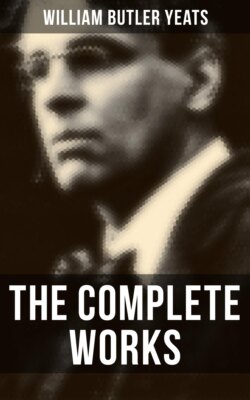Читать книгу The Complete Works - William Butler Yeats - Страница 117
На сайте Литреса книга снята с продажи.
The Poet pleads with the Elemental Powers (p. 37). He thinks of his past Greatness when a part of the Constellations of Heaven (p. 40). He hears the Cry of the Sedge (p. 28).
ОглавлениеThe Rose has been for many centuries a symbol of spiritual love and supreme beauty. The lotus was in some Eastern countries imagined blossoming upon the Tree of Life, as the Flower of Life, and is thus represented in Assyrian bas-reliefs. Because the Rose, the flower sacred to the Virgin Mary, and the flower that Apuleius’ adventurer ate, when he was changed out of the ass’s shape and received into the fellowship of Isis, is the western Flower of Life, I have imagined it growing upon the Tree of Life. I once stood beside a man in Ireland when he saw it growing there in a vision, that seemed to have rapt him out of his body. He saw the Garden of Eden walled about, and on the top of a high mountain, as in certain mediæval diagrams, and after passing the Tree of Knowledge, on which grew fruit full of troubled faces, and through whose branches flowed, he was told, sap that was human souls, he came to a tall, dark tree, with little bitter fruits, and was shown a kind of stair or ladder going up through the tree, and told to go up; and near the top of the tree, a beautiful woman, like the Goddess of Life, associated with the tree in Assyria, gave him a rose that seemed to have been growing upon the tree. One finds the Rose in the Irish poets, sometimes as a religious symbol, as in the phrase, ‘the Rose of Friday,’ meaning the Rose of austerity, in a Gaelic poem in Dr. Hyde’s ‘Religious Songs of Connacht’; and, I think, as a symbol of woman’s beauty in the Gaelic song, ‘Roseen Dubh’; and a symbol of Ireland in Mangan’s adaptation of ‘Roseen Dubh,’ ‘My Dark Rosaleen,’ and in Mr. Aubrey de Vere’s ‘The Little Black Rose.’ I do not know any evidence to prove whether this symbol came to Ireland with mediæval Christianity, or whether it has come down from older times. I have read somewhere that a stone engraved with a Celtic god, who holds what looks like a rose in one hand, has been found somewhere in England; but I cannot find the reference, though I certainly made a note of it. If the Rose was really a symbol of Ireland among the Gaelic poets, and if ‘Roseen Dubh’ is really a political poem, as some think, one may feel pretty certain that the ancient Celts associated the Rose with Eire, or Fotla, or Banba—goddesses who gave their names to Ireland—or with some principal god or goddess, for such symbols are not suddenly adopted or invented, but come out of mythology.
I have made the Seven Lights, the constellation of the Bear, lament for the theft of the Rose, and I have made the Dragon, the constellation Draco, the guardian of the Rose, because these constellations move about the pole of the heavens, the ancient Tree of Life in many countries, and are often associated with the Tree of Life in mythology. It is this Tree of Life that I have put into the ‘Song of Mongan’ under its common Irish form of a hazel; and, because it had sometimes the stars for fruit, I have hung upon it ‘the Crooked Plough’ and the ‘Pilot Star,’ as Gaelic-speaking Irishmen sometimes call the Bear and the North star. I have made it an axle-tree in ‘Aedh hears the Cry of the Sedge,’ for this was another ancient way of representing it.
